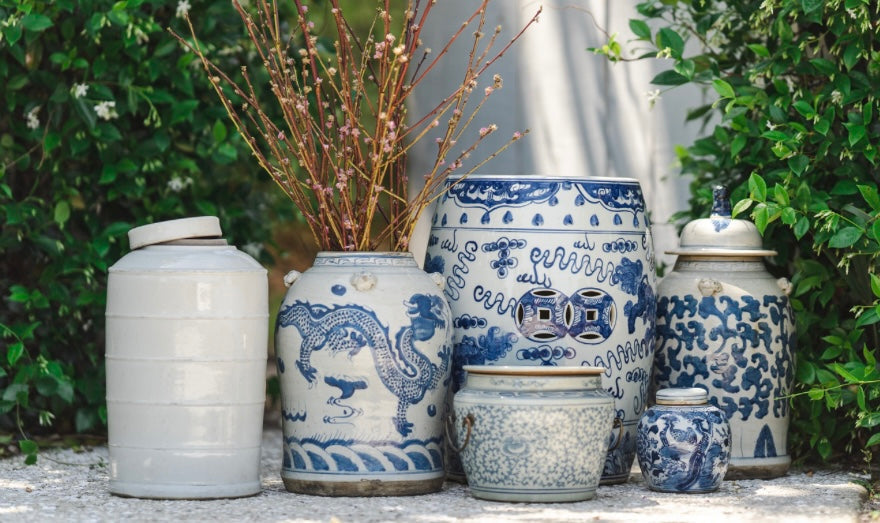Chinoiserie pieces have long been a connection point for the two of us. Our mothers and grandmothers appreciated and collected blue and white porcelain and they passed this love down to their daughters. We love the craftsmanship, the versatility and the style of these pieces and wanted to learn a bit more about their history...

One of the most identifiable characteristics of Chinese porcelain is the cobalt blue. This color was first introduced to China during the Tang dynasty (618-907) and originated from cobalt ores imported from Persia. These ores were scarce and only used in limited quantities, making any ceramics painted with cobalt highly sought after and often used for diplomatic gifts or special occasions.
Over the next thousand years, different types of ore and methods of applications were used, thus creating different styles and features. A retrospective look at Chinese history shows that different eras used different glazes, different firing temperatures and coveted different shades of blue. For example, we see a more purplish blue in the early 1400s and paler blues in the late 1400s to early 1500s.

Half Past Seven's Bird & Flower Jar
Trade of blue & white porcelain pieces began along the burgeoning Silk Road in the Near East and Southeast Asia and by the 16th century it had permeated Europe thanks to King Manuel I of Portugal. He gifted blue & white porcelain to other European courts, causing chinoiserie to become exotic and highly coveted. With the rise of the Dutch East India Company in the 1700s and the expansion of trade between Europe and Asia, porcelain pieces rapidly gained significance and even surpassed gold in terms of value at one point.





